#welsh legends
Explore tagged Tumblr posts
Text

My friend made me a meme. :3
#welsh mythology#arthuriana#mabinogion#the mabinogion#welsh myth#welsh giants#is that a tag?#welsh folklore#welsh legends#welsh stuff#the mabinogi#y mabinogi#arthurian legends#arthurian legend#arthurian mythology#welsh myth having so many giants is insane. ive mentioned it before but it is#anyways once again sorry to the arthuriana crowd for clogging up their tags!#i will shut up at some fuckin point i promise
66 notes
·
View notes
Text
The demon, Hiranyakashipu, and the Welsh hero, Lleu Llaw Gyffes -- what do they have in common?


Well, something I've talked a lot about before in some other threads that can be boiled down (a touch unfairly and we'll get into that) into the myth/trope of impenetrability or weakness. The idea of a character (usually a hero, sometimes a villain/monster) having "NO" weaknesses (terms and conditions apply - see: they have ONE you just might not know it).
So, Lleu Llaw Gyffes, Welsh hero, he cannot be killed during the day or night, nor indoors or outdoors, neither riding nor walking, not clothed and not naked, nor by any weapon lawfully made.
Interestingly enough Hiranyakashipu has a very similar condition - the demon, manages to get a boon from the creator god, Brahma at first he asks for immortality, which he is denied. However, he manages to sort of work his way there with a loophole (only...that loop was certainly holed back at him - as it often is in old epics and tales).
He wished that he could not meet death by any living entities created by god, that he could not fall during true day time or night, nor on the ground or sky, or by animal or man, and he continues to lay his conditions as such can't be killed by a god, or a demon, or a snake from a lower plane of existence.
Only...enter Vishnu, a god who is not Brahma who did not create the demon, or others. To get around this, Vishnu becomes the incarnation and avatar of himself, Narasimha

Not mortal man, or god, or demon, or full animal. But something between them all, he grabs the demon and places him on his lap - thus he is no longer in the sky or ground, and it is done at twilight (not day or night but between - the transition), and he rips him apart with his clawed hands - not a made weapon, but something natural. Both Lleu Llaw Gyffes and the demon Hiranyakashipu had progenitors and thus grandfathers.
Interestingly enough Lleu is the grandson of: Beli Mawr or Beli the Great. Our demon is the descendent of Mahabali or Bali Maharaj - Bali the Great, Bali the King (demon king in this case).
Now, I've talked about the similarities of myths and tropes and beats in epics and tales out of these two (and other cultures) before and it's likely owing to shared P.I.E. (proto indo european) origins backed up by shared genetic ancestry scientists have discovered linking Indians and Celts to the P.I.E group not to mention the etymological similarities. The differences here are one is a hero, and thus his weakness is not exploited in full and he doesn't die.
Going back though, we have German story of Siegfried the dragonslayer, who bathes in the blood of Fafnir after killing him (due to a broken scale/exposed weakness in the armor - hi smaug), and thus himself gets invulnerable/impenetrable skin (terms and conditions apply) where the leaf of a linden (lime tree) sticks to his back preventing it from being coated in protective dragon's blood. Later his lover is tricked into divulging his weak spot (something similar happens to Lleu only he survives) and in this case Siegfried is killed.
This is just one of many connections in shared myths around the world/tropes/beats and how other parts play out differently (some cultures also just love taking things to a much darker place - stares). LIGHTEN UP A LITTLE.
Anywhoooo there's a small fun little myth.
#Hiranyakashipu#Lleu Llaw Gyffes#welsh folklore#Welsh mythology#Welsh myths#Welsh legends#Brahma#Loophole#folklore#folktale#stories and myths#mythology#mythological creature#vishnu#Narasimha#Beli Mawr#Beli The Great#Mahabali#Bali Maharaj#celtic folklore#indian folklore#myths and legends#Siegfried the dragonslayer#Fafnir#tropes#world myths#world mythology
21 notes
·
View notes
Text

[...]

[...]

(Source: Vulgate Cycle)
A famous recurring character of Arthuriana, Malaguin, the King of the Hundred Knights. If his name is any indication, it might very well be that Mr. 100 Knights here is none other than Maelgwn Gwynedd.
Him being the cousin of Galehaut and brother to the Lady of Malehaut kinda makes sense when realized his chief territory is Ynys Mon/Anglesey. (Sorelois has been speculated to be identifiable with the Isle of Mann) This technically means he's also the King of Norgales (Gwynedd/North Wales), even though that's separate character in-story*
*(Here in Vulgate Lancelot, the King of Norgales is "Bernant" but in Vulgate Merlin, the King is Tradelmant/Cradelmant, who if I didn't know any better might be another expy, this time of Maelgwn' dad Cadwallon Lawhir. Tradelmant also has a brother who is king of South Wales named "Belinant". Makes you think....)
Prose Tristan tries to change his name to Heraut li Aspres, but honestly, Malaguin/Maelgwn sounds better and has the history points for it, similar to the idea of "King Claudas = Clovis I of the Franks"
Also, this kinda places the character known as the "Queen of Norgales"- sorceress companion to Morgan le Fay and Sebile - in very weird position considering "Heraut" is the Queen's lover in Post Tristan Canon.
#king of the hundred knights#maelgwn gwynedd#welsh history#welsh legends#arthuriana#vulgate cycle#galehaut#lady of malehaut#arthurian legend#arthurian mythology#queen of norgales#history connections
16 notes
·
View notes
Text
DEWITHON ‘24: Llyfrbabble (Bookbabble) #2
A series of short posts highlighting recent cultural and bookish chatter from Wales This is the second post of D24 in which we look at literary and other cultural goings-on (Welsh speakers may prefer sgwrsio llenyddol Cymraeg) from the land of poetry and song. **************************** Are You a Cwlture Vwlture? For those of you with an ear for a tune and a liking for underground…
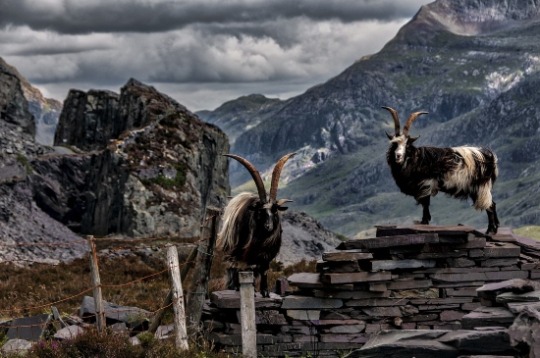
View On WordPress
#dewithon24#CWLT#Dewithon#Horatio Clare#Jon Mlynarski#Reading Wales 2024#Welsh Culture#Welsh Folktales#Welsh Legends#Welsh Myths
0 notes
Text

Guinevere and Iseult: Cartoon for Stained Glass, William Morris. 1862.
#art#aesthetic#art history#historical fashion#historical art#women in art#victorian#women#pseudo medieval art#medieval art#1860s art#medieval aesthetic#guinevere#iseult#Isolde#arthurian legend#medieval fashion#1860s#william morris#stained glass#tristan and iseult#Arthur and Guinevere#king arthur#medieval legend#french medieval#welsh medieval#Irish medieval#engraving#cartoon#fashion
3K notes
·
View notes
Text

780 notes
·
View notes
Text

the lady of the lake
#art of the day#digital illustration#artists on tumblr#women artists#mythology art#digital art#illustration#graphic art#myth#king arthur#arthurian legend#lady of the lake#nimue#merlin#excalibur#welsh mythology
295 notes
·
View notes
Text


Illustrations from The Mabinogion by Alan Lee (2001)
#alan lee#art#illustration#modern art#english artist#british artist#books#book illustration#mythology#welsh legend#welsh mythology#knight#knights#the mabinogion
4K notes
·
View notes
Text

King Arthur. Illustration by an unknown artist from a 15th century Welsh manuscript of Geoffrey of Monmouth's History of the Kings of Britain (Historia Regum Britanniae). Now in the National Library of Wales, Aberystwyth. Photo credit: National Library of Wales.
#art#art history#Middle Ages#medieval#medieval art#King Arthur#Arthurian legend#Arthuriana#illustration#illuminated manuscript#manuscript illumination#Geoffrey of Monmouth#Welsh art#15th century art#National Library of Wales
332 notes
·
View notes
Text
I don’t know who needs to hear this but Perceval and Galahad aren’t interchangeable. Their thematic journeys couldn’t be more different. Even in a scenario which writes Galahad as less “perfect,” it doesn’t make him Perceval. The plot beats don’t align and their approaches to the scenarios set before them differ considerably. Perceval never exhibits anxiety about what he does, he’s impulsive but determined. Galahad expresses embarrassment multiple times in Post Vulgate and behaves in a resigned way about the unfolding events. Perceval is assertive where Galahad is often passive. Perceval triggers events through his actions, Galahad himself is the trigger. Perceval wasn’t created to be a martyr the way Galahad was. Their relationships with their mothers couldn’t be more different and Perceval never even meets his father at all.
The beauty is in their differences, not picking and choosing between them.
#arthuriana#arthurian legend#arthurian mythology#arthurian literature#welsh mythology#sir perceval#sir percival#sir peredur#sir galahad#why you gotta pit two bad bitches against each other?#my post
156 notes
·
View notes
Text
you've won, sister. but at what cost?

March to Camelot - Prompt #2 - Ruin
#once and future; a bbc merlin rewrite#march to camelot#arthuriana#arthurian legend#arthurian mythology#arthurian fantasy#arthurian retelling#arthurian literature#arthurianaedit#welsh mythology#morgan le fay#morgana pendragon#morgana#bbc morgana#morgana bbc#merlin#bbc merlin#merlin bbc#adventures of merlin#art#fanart#camelot#avalon
126 notes
·
View notes
Note
hi anon again and no you didn't bore me at ALL!! i loved hearing about the welsh arthurian mythos and i want to know more. please tell me where i can read about them and tell me interesting facts you like about it!!!!!!!!
Anon, I am hugging u. Thank u for saying I didn't bore u!!! So glad u liked my mad ramblings!!!
Okay, so The Mabinogion is probably a good place to start. It contains four branches of Welsh mythology which sorta ties into Welsh Arthuriana because some of the gods (Manawydan, Pryderi, Gwyn ap Nudd, Mabon ap Modron, Bendigeidfran's head.) pop up in both. Also, it contains Culhwch and Olwen which is a tale concerning Arthur's cousin Culhwch going on a quest with Arthur and his knights so he can marry Ysbaddaden Pencawr's daughter, Olwen. It's believed to be the earliest-written Arthurian romance preserved in manuscripts. It also contains three other Arthurian romances which are either Welsh tales that have been adapted by De Troyes and then back into Welsh but with a twist, or just based on French romance tales that have been repressed for the Welsh. (Idk really know which one is true but they're all fun!!!)
There's also the tales of Lludd and Llefelys (a personal fave.), The Dream of Rhonabwy (a fictional dream containing Arthurian characters but also actually REAL LIFE Welsh ruler Madog ap Maredudd.), AND The Dream of Macsen Wledig which is essentially one man's quest to bonk a hot lady in Caernarfon. (Tbf, Macsen Wledig is somewhat of an Arthurian figure in his own right cuz he too is seen as a Mab Darogan (prophecised son) in Welsh Culture because he united the Welsh under one banner, and then died, and then Wales immediately split into kingdoms again.)
You can either access Charlotte Guest's translation which I am sure @queer-ragnelle has scanned, or Sioned Davies' new translation which has handy dandy footnotes and such.
There's also Gwyn Jones and Thomas Jones translation which uses a lot of the medieval language but was also made into a beautifully illustrated book by Alan Lee (An illustrator who is famous for LOTR illustrations). Jeffrey Gantz's edition is, I think, the most recently published edition but you can tear Sioned Davies from my COLD DEAD HANDS. Or, if you like poetry, one of my old English lit lecturers, Matthew Francis, has done a poetry version of the four branches! It's amazing!!!!
Also, Naxos has an audiobook version read by Matt Addis which uses Guest's translation but is good for listening to. I love it.
(You'll also want Trystan ac Essyllt, 'The Triads of Britain' and 'The Arthur of the Welsh' which are written by Rachel Bromwich, and I recommend O.J. Padel's 'Arthur in Medieval Welsh Literature' for more on how he's portrayed through that. And if you like modern re-tellings Seren Books has a box set of them! Each one is a re-telling of each branch of the Mabinogi, Culhwch and Olwen, the three romances, and the others. Very fun!)
Now in terms of my favourite things: Peredur being Urien's first cousin irl made me be like WHAT? Like, they're SO interconnected it's MADNESS. Urien, Owain, and Peredur are all related. Also, the fact that Welsh Arthuriana has swallowed up eight irl monarchs (Edern ap Nudd, Cunedda, Owain, Urien, Geraint, Peredur, Macsen Wledig, Cynon ap Clydno (Owain's sister, Morfudd's, lover), and Cynyr Ceinfarfog (Cai's dad), one poetic genius (Taliesin - who wrote about Urien as it goes!!! BTW read the tale of Taliesin. Sjdddkxk. The Jones and Jones translation has it, the Davies translation of the Mabinogi does not.), Emrys Wyllt who was the inspiration for Merlin, and sixty-seven thousand gods, as well as a few saints.
My favourite fact about Welsh Arthuriana is probably that Gwalchmai and Peredur probs had a relationship, Arthur is canonically in love with his boat, Cai literally says 'if u held my dick like that I'd die.' in Culhwch and Olwen, and Gwenhwyfar's a fuckin GIANTESS. 😍😍😍😍 I have many more facts but like I don't want to clutter the feed!!!!!
Hope my rambles were helpful in some way! Have a good day/night, anon! ☺️🧡
#anon ask#anon ur super nice djdjdkd#arthuriana#welsh mythology#mabinogion#the mabinogion#welsh myth#y mabinogi#the mabinogi#arthurian legend#arthurian mythology#oh fuck also the mab is a good book rec too! its a modern retelling and its targeted for kids but michael sheen does the foreword!#its SO FUN#the third branch is written from Cigfa's perspective and it SLAPS#king arthur#arthur pendragon#merlin#queen guinevere#owain ap urien#urien rheged#taliesin#sir kay#the four branches of the mabinogi#charlotte guest#welsh folklore#welsh legends#arthurian literature#arthurian legends
29 notes
·
View notes
Text
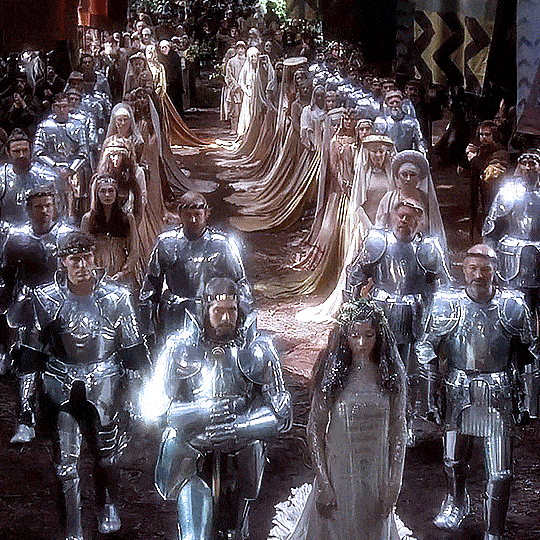
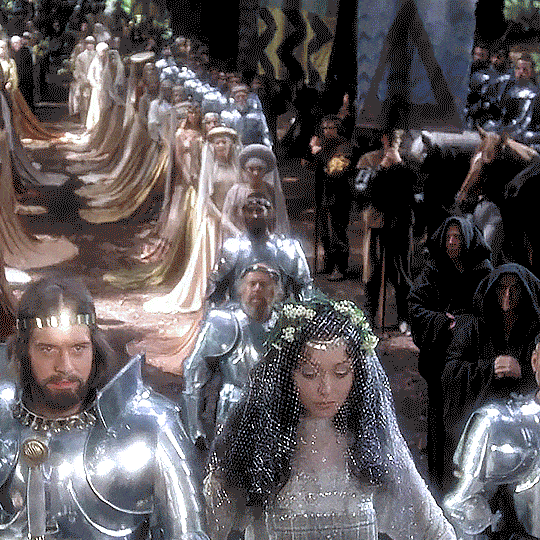
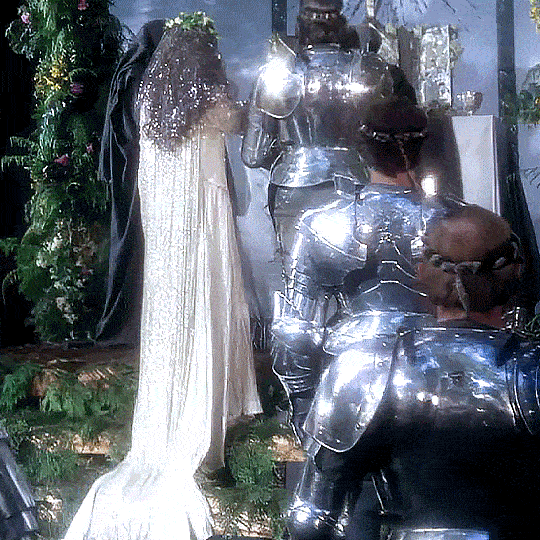
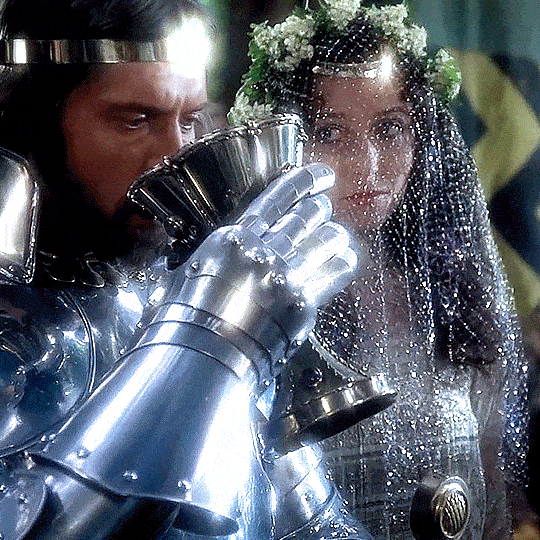

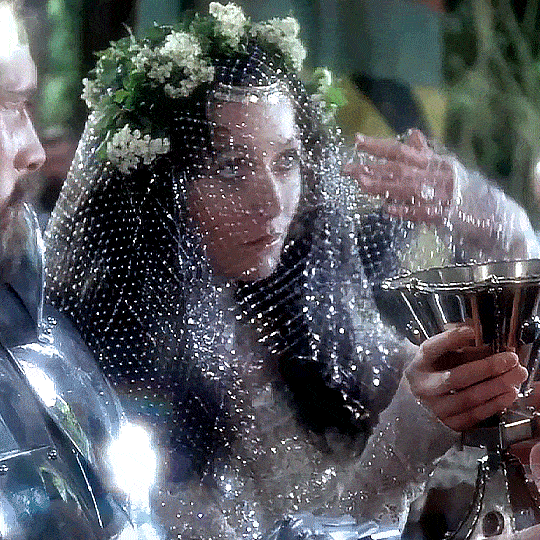
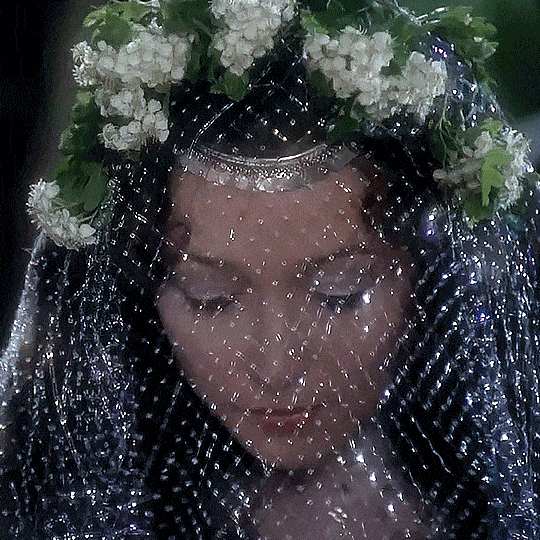


Excalibur, 1981
#excalibur 1981#arthurian legend#english mythology#welsh (mabinogi) and celtic mythology#european history#80s movies#period movies
332 notes
·
View notes
Text
"Green is my steed of the tint of leaves..."
Guinevere being iconic, Ymiddiddan Melwas ac Gwenhwyfar
#queen guinevere#gwenhwyfar#melwas#maleagant#dialogue of melwas and gwenhwyfar#welsh legends#arthurian mythology#arthuriana#arthurian legend#arthurian legends
9 notes
·
View notes
Text
Note: This is just for fun and because I'm nosy. I realize the timeline for inspiration is not always simple and can be a bit muddy.
#arthurian#arthuriana#arthurian legend#arthurian mythology#welsh mythology#geoffrey of monmouth#chretien de troyes#The Vulgate Cycle#Le Morte D'Arthur#Idylls of the King#Howard Pyle
125 notes
·
View notes
Text
Went to a Uni taster day thing today. This place is the holy GRAIL (heh) of Arthurian legends!

They legitimately have rows upon rows like this, each bookcase has 6 shelves and each wall has like 4-6 bookcases. And there are over 12 walls of this!!!

(Ngl, I read "The Lancelot-Grail Reader" as "Lancelot-Grail x Reader" maybe I need to take a break from Lancelot fanfics...)
They have journals, scripture, various editions of the original texts and books discussing them in various ways, a metric fucktonne of stuff about knights/King Arthur/Welsh mythology/welsh medival lore stories and history, AND many of the books are in Welsh as well...

Including an entire shelf of The Mabinogion/Y Mabinogion/Y mabinogi. ( @gwalch-mei I feel like it might have been you or one of your moots who wanted to read this in Welsh?)

So yeh. I'm kinda excited to start at this Uni because in my down time I can borrow some of these (and let's be fair, use them in my fics), given I only actually own 1 arthurian legend related book, and that is a translation of the Mabinogion in English 😅😂
Also I feel like you guys are the only ones who will understand why seeing these two made me happy too;


Honorary Gawain of Orkney/Gwalchmai mention ofc
#y mabinogi#y mabinogion#the mabinogion#arthurian legends#arthurian literature#arthuriana#welsh mythology#welsh scripture#welsh history#gwalchmai if you squint
37 notes
·
View notes